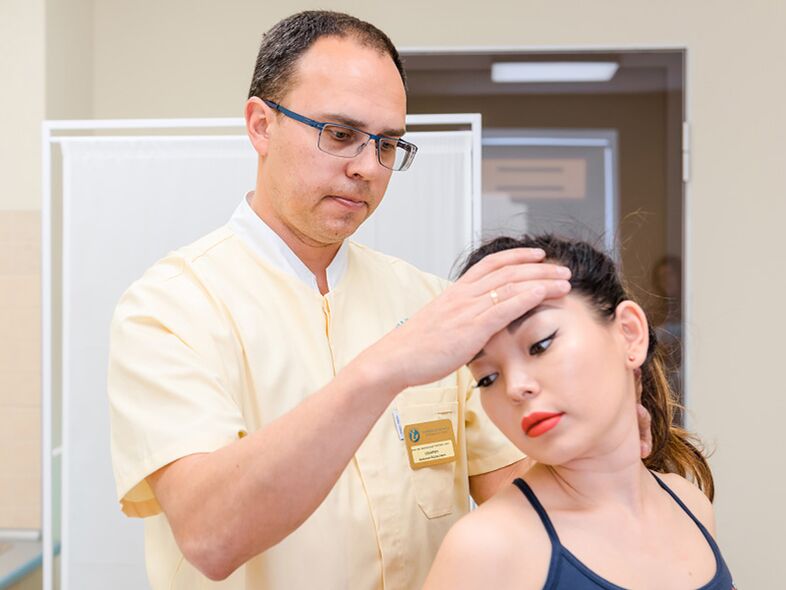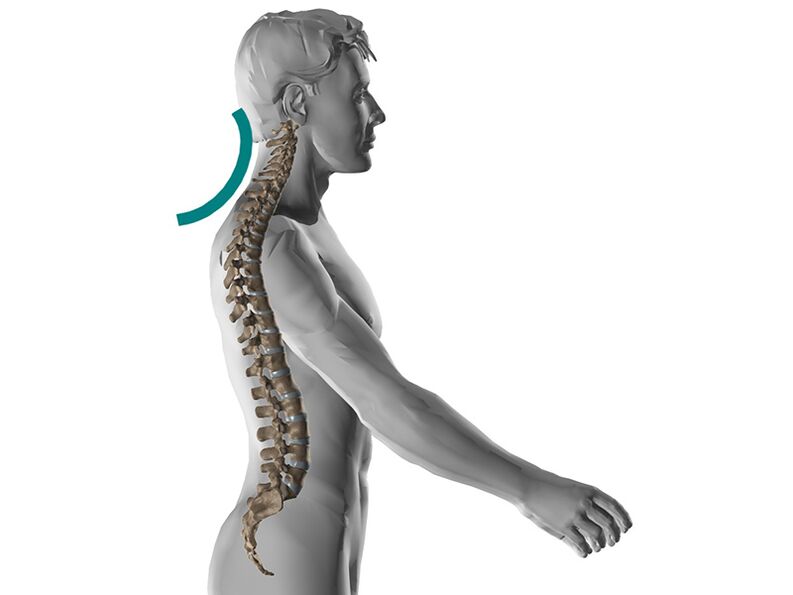Cervical osteochondrosis is a degenerative dystrophic disease commonly found in the cervical spine. In women, weak muscle corsets, as well as thin bone tissue, lead to faster progression of the pathology. The symptoms of cervical osteochondrosis in women are obvious. When they appear, treatment should be started immediately.
Causes of cervical osteochondrosis in women
Cervical osteochondrosis in women can develop in the presence of a variety of predisposing factors. The development of the pathology can be diagnosed regardless of the patient's age. Causes of osteochondrosis in women are:
- Insufficient physical activity;
- sedentary work;
- A sedentary lifestyle.

The occurrence of pathology in the cervicothoracic region was diagnosed as frequent hormonal exhaustion. This disease occurs when the load on the spine increases during childbirth. Improper nutrition throughout life becomes the cause of metabolic disorders. All of these can lead to the development of the disease.
Older women are at risk of developing the disease. A fairly common cause of osteochondrosis is hypothermia. The disease can develop with injury. Along with the injury, the onset of disc disease in women is diagnosed. Pathology often develops in the context of an infectious process.
Osteochondrosis in the fairer sex develops under the influence of various factors. That's why you need to take responsibility for your own health.
signs of osteochondrosis in women
Women develop signs of osteochondrosis some time after the degenerative process begins. Often there are vertebrae that protrude from their borders, which exacerbates the condition as they thin out in parallel. Pain is diagnosed in the context of an inflammatory process of the disc, which may be permanent or temporary.
During the disease process, brain tissue is damaged, causing headaches. Dizziness is diagnosed when cervical osteochondrosis squeezes the vertebral arteries. Many times, women who are less capable of sex experience changes in blood pressure. During the development of cervical osteochondrosis, women may faint.
In some cases, patients experience hearing loss due to pathology. During the course of osteochondrosis in women, symptoms manifest in the form of gait changes. The pathological process leads to frequent mood swings. Most patients were diagnosed with severe fatigue even while performing daily tasks. Symptoms may manifest as decreased vision. Various dental diseases develop when the disease significantly worsens the condition of the teeth. Some people are diagnosed with back and neck muscle spasms. With this pathology, the intensity of the sound may be reduced.
The disease can negatively affect the state of the brain, leading to deterioration of memory and thought processes. Some patients snore during sleep. This is because the neck muscles are tense during sleep. The most common of the symptoms is radiculopathy. Its appearance is diagnosed when a nerve in the cervical spine is compressed.

Because the disease affects the nervous system, it can cause numbness in the fingers, preventing them from performing the most important tasks related to fine motor skills. Symptoms are weakness in the arm. Back pain can result if thoracic or lumbar osteochondrosis is diagnosed. If the neck area is affected, the head or neck can be affected. Pain can radiate to the back as well as to the extremities. Sleep disorders are often diagnosed.
After age 50, the signs of osteochondrosis in women are more pronounced.
Treatment of cervical osteochondrosis in women
When symptoms appear, immediate treatment is required for cervical osteochondrosis in women. First, joint pain is eliminated. Proper examination is necessary before treating osteochondrosis in women. This will allow the appointment of reasonable treatment.
Primary treatment begins only after the patient has undergone a complete examination. The most common combination therapy includes medication. In this case, topical preparations are recommended.
When the disease appears, the main treatment is started only after consulting a doctor. If topical preparations are not effective enough, the drug in tablet form is recommended. In most cases, the pain goes away completely with such treatment. If severe muscle pain is observed, anesthetic injections are recommended.
With pain relief, primary treatment helps in most cases. However, to increase its effectiveness, you can use folk methods. Funding is recommended to eliminate shoulder and neck pain. The treatment characteristics of cervical osteochondrosis require massage, drug treatment, and folk methods. Physical therapy is also effective. Since gymnastics were ineffective, yoga and other treatments were prescribed. It is also recommended to use methods such as water aerobic exercise to treat the disease.
Precaution
In order to avoid the development of pathology, timely prevention is recommended. It involves following some simple rules. Regular exercise is recommended, with the help of which the upper shoulder girdle will develop and the back will be strengthened. Adequate physical activity will allow women to avoid the disease. Regular outdoor walks are recommended.
Swimming is an effective prevention method. If a woman has a sedentary job, she is advised to get up and exercise regularly. Every woman should have a reasonable and proper diet. It is recommended to eat foods rich in vitamins and minerals. When the first signs of the pathological process appear, it is necessary to seek the help of a doctor. Timely identification of the pathological process is the key to the successful treatment of the pathology.
Osteochondrosis is characterized by severe degenerative changes in the cartilage and joints. In women, pathology is accompanied by clear signs. At the first sign, patients should consult a physician, who will prescribe a reasonable course of treatment after a proper diagnosis.






























